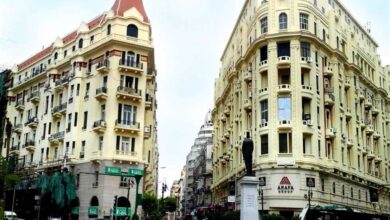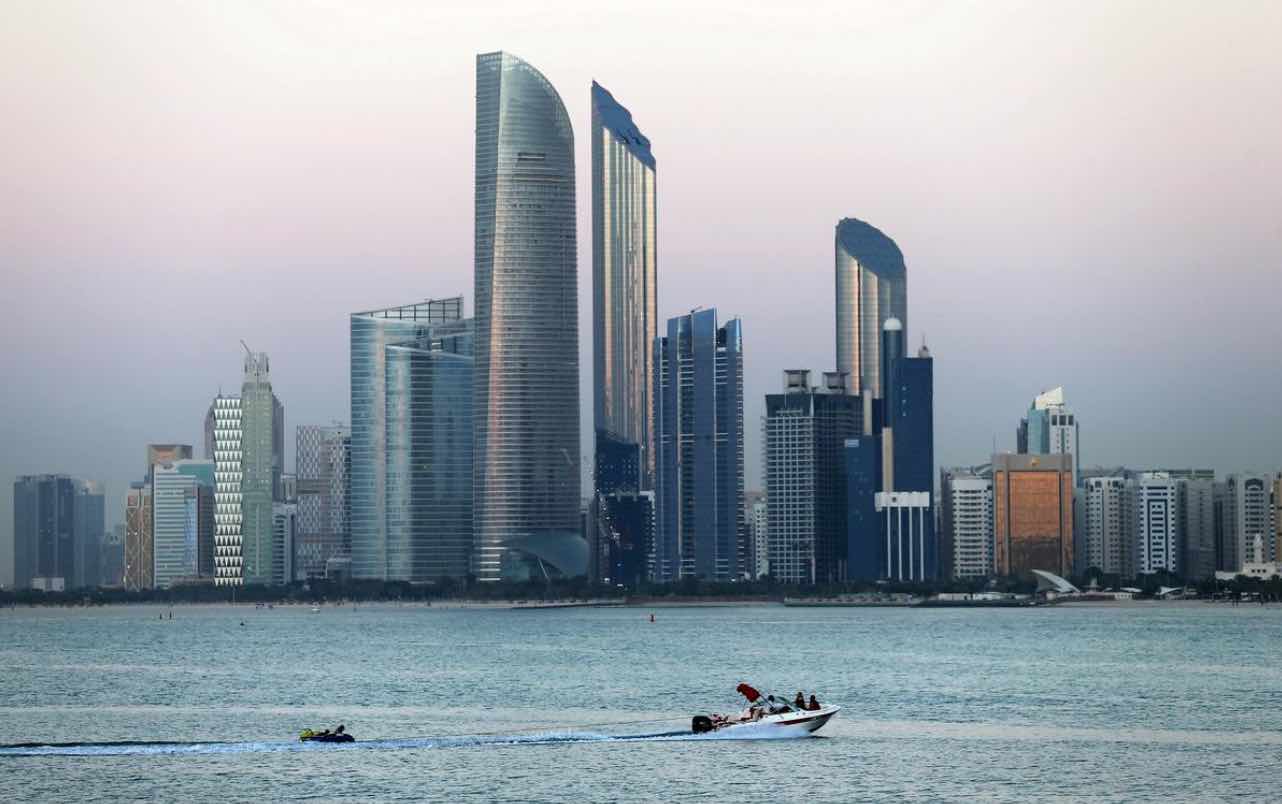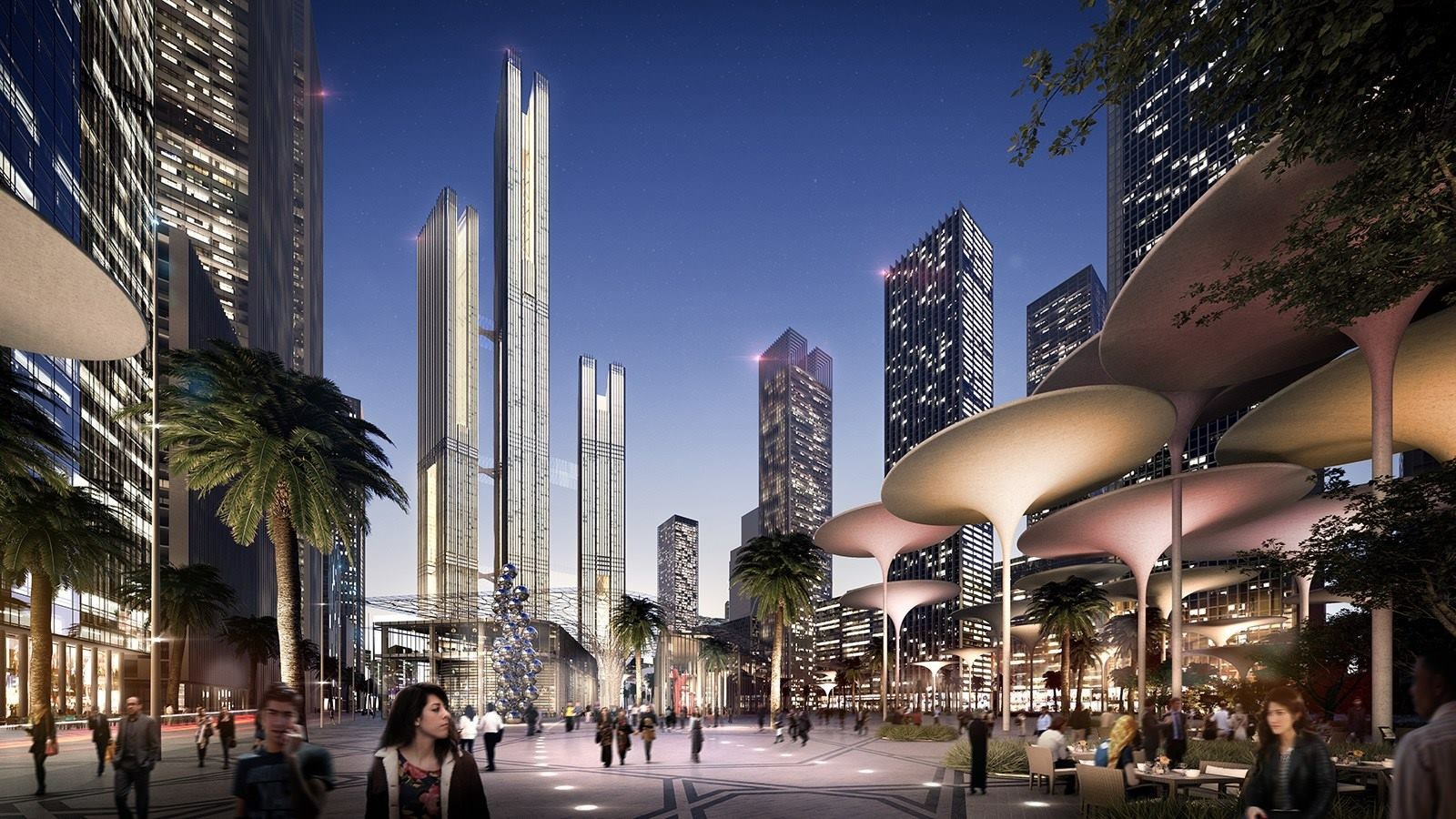After hearing rumors about “the company that is buying out Downtown Cairo” and questions about the fate of the area, Al-Masry Al-Youm met with Karim el-Shafei, Chief Executive Officer of Al Ismaelia for Real Estate Investments, at the company’s headquarters in Downtown Cairo. In this first part of his conversation with Al-Masry Al-Youm, el-Shafei explains the group’s concept of urban regeneration and its initial works in Downtown Cairo.
Al-Masry Al-Youm: Let’s start with you telling us who the consortium is and what its mandate is?
Karim Shafei: The consortium consists of Beltone Private Equities, Samih Sawiris, Amwal el-Khaleej–a private equity Saudi firm, Sherif Suleiman–a Saudi investor, and Ahmed Khaled Moustafa and Shahira Mahmoud, both Egyptian investors. Samih Sawiris is a real estate developer locally and internationally. Amwal el-Khaleej has been active in the region and Egypt for the past three years and invests in textiles, jewelry manufacturing and petrochemicals. Sherif Suleiman has invested in Egypt since the 1970s in various fields. The other Egyptians are small investors from different fields but they liked our project and wanted to pitch in.
None of our investors are experienced in urban regeneration, which is a very specific field. Nevertheless, this is an expertise that you can find anywhere in the world. And we are in discussion with people who have done that in different parts of the world. We contracted the International Institute for Urban Development, which is an offshoot of the Harvard School of Architecture and Urban Design, and they are going to do the urban plan for our buildings.
Al-Masry: What do you mean by the urban plan?
Shafei: We are taking buildings that, when they were built 100 years ago, were serving a certain function. Then over the years the function changed. Now that we are trying to take these buildings and revive the area, they might be taken back to their original use or developed for a new use. When you do urban development, it means you study all the requirements of the neighborhood, of those buildings, the potential future functions of those buildings, and what they require in terms of infrastructure and support services. For example, one of the things we are aiming for is for Downtown to be attractive for residential use again. Today it is not attractive at all. You don’t have the supermarkets, the restaurants and cafes that cover an entire market segment. If you turn buildings into a hotel or offices or a residential unit, there are implications on the parking, on the infrastructure.
Al-Masry: Can you explain to us the consortium’s business model? How is such work profitable for you?
Shafei: I can give you a simplistic example. Let’s say a car sold in the market, second hand, for LE100,000. This car has been in an accident and will require LE50,000 to be fixed. If I try to sell this car for LE50,000 to you and you will need LE50,000 to fix it, its market price will be LE100,000. Then no one will buy my car because they will say, “Why do I need to buy a car that is at the end of the day taking the risk of market changes? Why should I buy it for LE50,000 and put up another LE50,000?” I would buy it for LE30,000 put up my LE50,000, and make my profit there. That’s the case with the buildings today.
The buildings are in horrific conditions. The ownership is fragmented. [The owners] don’t know how to sustain the buildings or profit from them. The same thing with the tenants. Some of them are third-generation tenants. You start with one tenant and today you have six or seven brothers and sisters in the lease contract. What happens is that all of them are willing to get rid of the buildings today at market price, [so] we think, if we buy it today, spend the money necessary for the people who want to leave and spend the money necessary to refurbish it, we will make a mark up on the difference.
You have to bear in mind that the number of residents in Downtown is minimal. Less than ten percent of all the tenants in Downtown are residents. The rest is businesses. Of the 300 tenants that we have, there are only 20 residential contracts, of which six do not even live in the apartments, but are subleasing them.
Al-Masry: Did you plan any alternative housing for those tenants?
Shafei: We discuss with each of them according to their requirements. Some of them want to relocate to another apartment in Downtown but instead of it being leased, they could own it or instead of it being leased according to the old rent law, we can get them a 50-year lease. Some of them are just happy to take the money and leave.
Al-Masry: What about businesses?
Shafei: For some of them, it’s a better alternative to sell the rental contract than to remain in business because their business is not lucrative at all. [A tenant may be] making LE2000 a month and there are many brothers, because this is a third generation, [but] they can sell the shop for LE1,500,000. Some of them are too old to operate. They would never [otherwise] get a chunk of money in one go, so it’s better for them to sell their contract.
Al-Masry: How do you price those properties?
Shafei: We operate according to market prices and their comparables. Obviously it depends on the size of the space, the location and the conditions. But at the end of the day, you know in [any] street how much you pay for a shop or a flat.
Al-Masry: What are the parameters of Downtown that you’re interested in?
Shafei: We are interested in the area where there are concentrations of buildings. We are interested in the main area of Downtown, where there is Talaat Harb Street, Sherif Street, Abdel Khaleq Tharwat Street and Abdeen. We are interested in those because of the quality and the availability of the buildings that are privately owned. They are also lesser damaged areas with not so many mutilations.
The area has also sidewalks, which is a rare thing in Egypt and a precious thing to have. Buildings there are much bigger, and this is one of our advantages. We can buy big ticket buildings. Anyone can buy a LE2,000,000 or LE3,000,000 building, but to buy a LE25,000,000 building you need to be a big company.
[So far Ismaelia Consortium has purchased 20 buildings, about 50 percent of what they plan to buy].
Al-Masry: What are your plans for those buildings?
Shafei: We have ideas for some and they will be confirmed by the urban plan. Some buildings have to be operated for a few years before we know what to do with them. We have to conduct technical studies on the buildings, about the tenants, those who intend to sell, and those who intend to stay. Based on that, we can design a function. Fully vacant buildings can be operated for a single use like hotels or office buildings. If some tenants stay, you will have to opt for multiple use. If tenants stay in the first two floors, there will be a function for the remaining floors.
Al-Masry: Are there zoning regulations on how those buildings can be used?
Shafei: There are tons of regulations that have been piling up since the early 1990s until today. Obviously, we have to follow them but we are offering something that no one else is offering. We are offering a plan for a certain percentage of Downtown. So we cannot have a disconnect from people in charge. We ask for exceptions because in return we do different things.
Al-Masry: Have you encountered difficulties with rights to owning buildings?
Shafei: There are no restrictions in Egyptian law on the transfer of ownership of owned buildings. No one can stop us on that level. But anything we need in those buildings has to be approved by the authorities. Our investment is focused on refurbishing. So I don’t want to do that and then find the building next door sold out to some one who tears it apart and builds a skyscraper. I have an interest to comply with the regulations to the fullest and also empower the authorities in the process.
Al-Masry: Are you cooperating with civil society or local groups on any level?
Shafei: First of all, we wanted to work with organizations regarding tenants who have certain social challenges in terms of finances or relocation. I spoke to a few and saw if they have relocation or rehabilitation programs. When we started working with the people who are renting our spaces we found that they have very little interest in working with those groups. So we abandoned the idea. We still have contacts and we could work with them. If the tenants don’t want it, we can’t work with them.
The other level of cooperation is our work with a lot of art and culture organizations such as the Contemporary Image Collective, el-Mawred el-Thaqafi, the Townhouse Gallery for contemporary art, Studio Emadeddin and 100 Copies.
We think that a key stepping stone for reviving downtown is art and culture across different market segments. We are not focused on the seven-star, elitist models. For example, the Townhouse Gallery addresses certain segments, while el-Mawred el-Thaqafi addresses different segments.
Downtown should be a dwelling place for all segments of society and should not be exclusive for high-end or affluent society. We have an interest in those organizations because they attract positive traffic. For example, we are not interested in the C-class consumer coming to Downtown to harass the girls coming out of cinemas, but rather in those C-class people who would be coming here to listen to a good piece of music or attend an exhibition or a performance.
The conversation continues. Follow the second part on Sunday, 15 May, 2010




